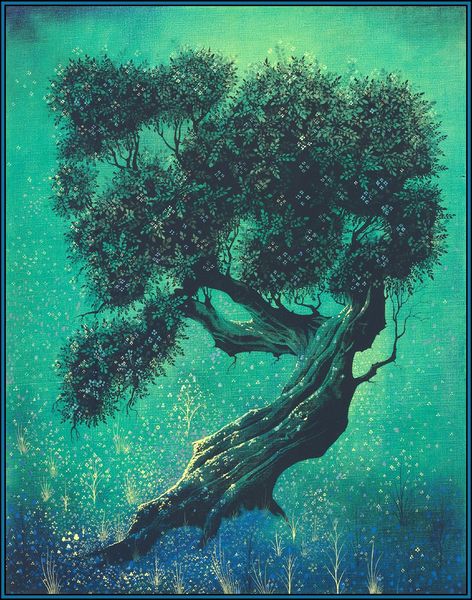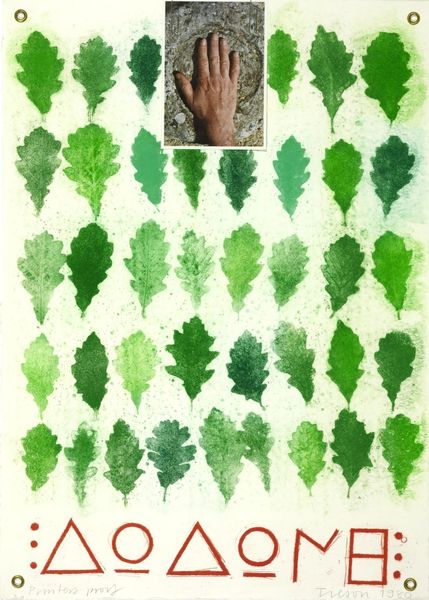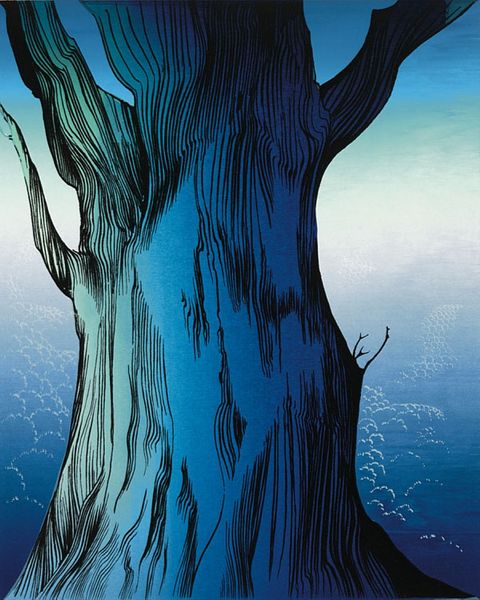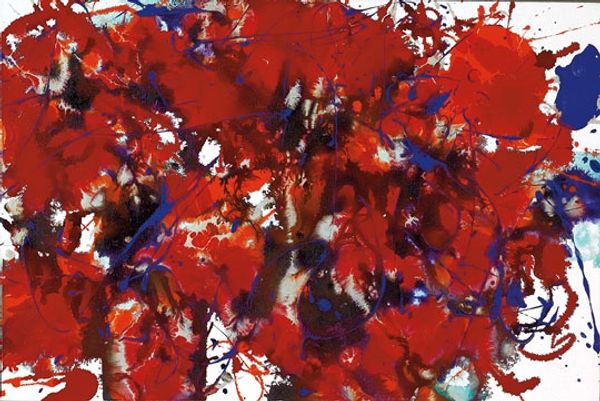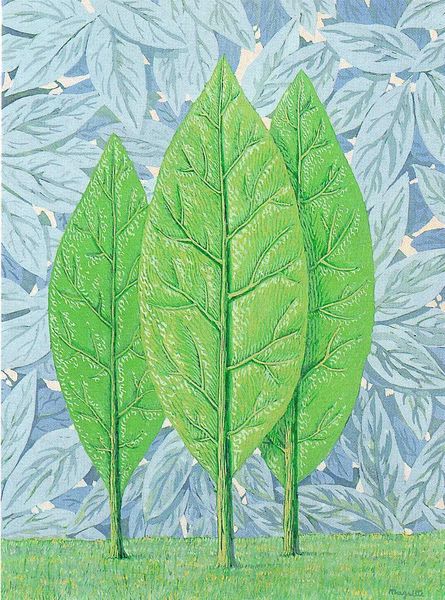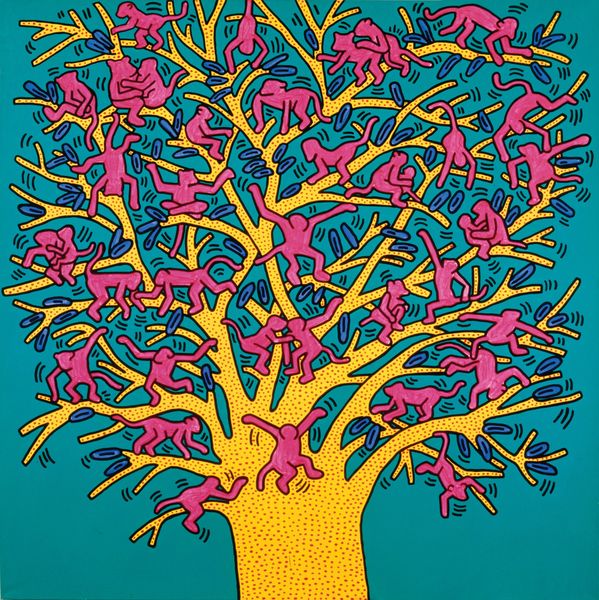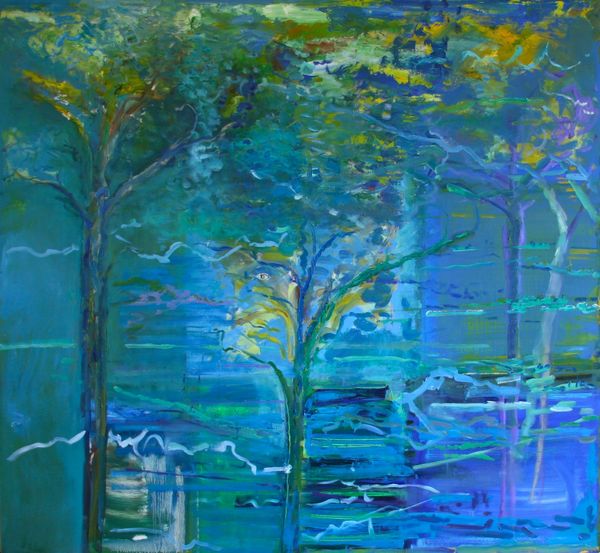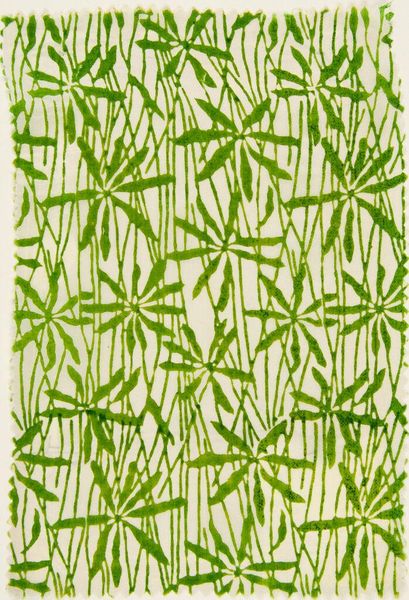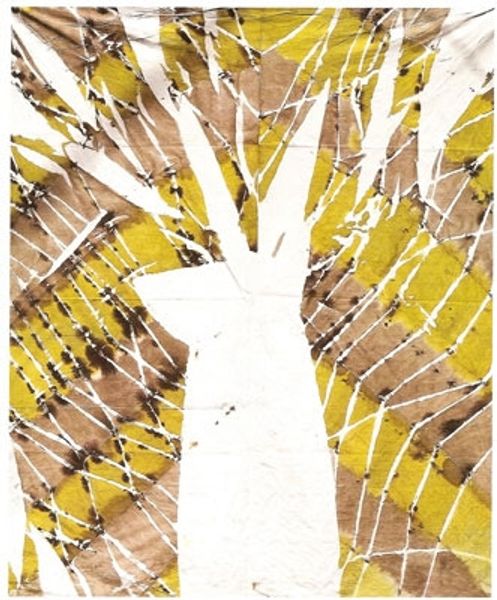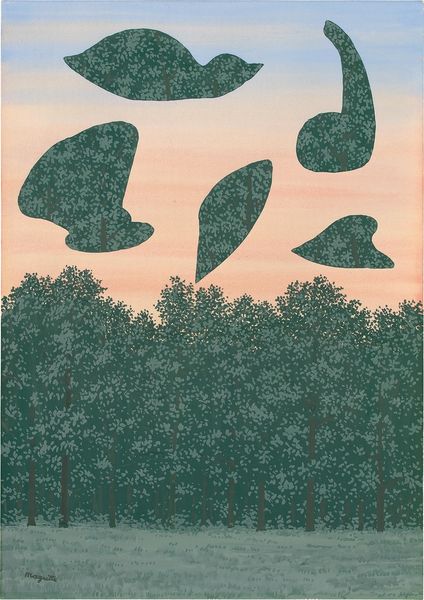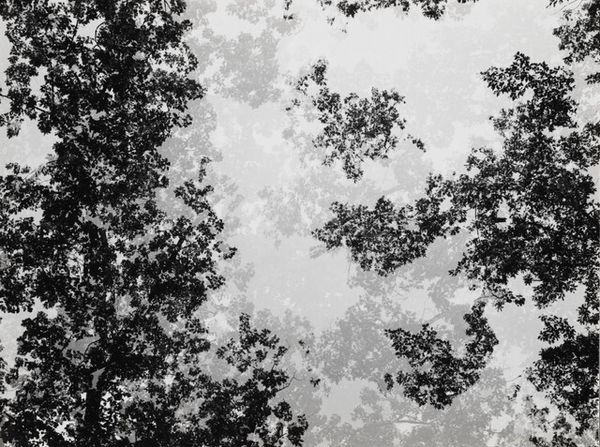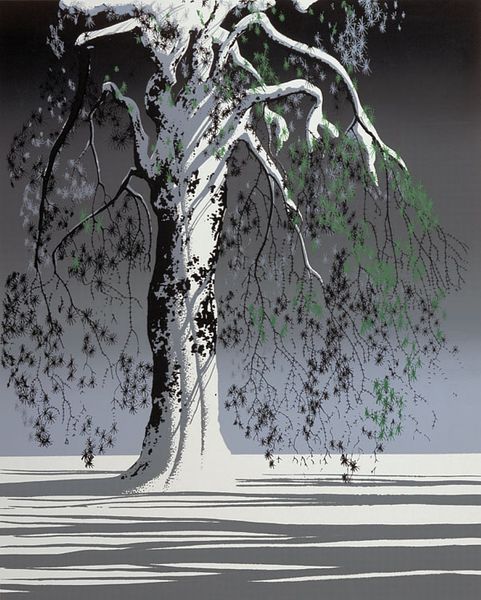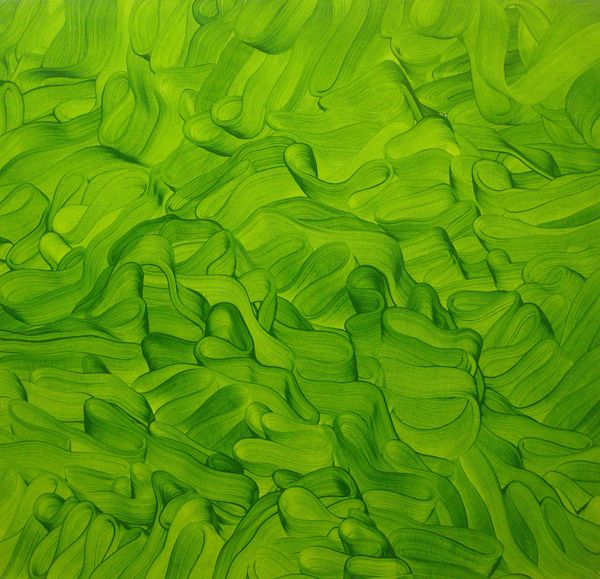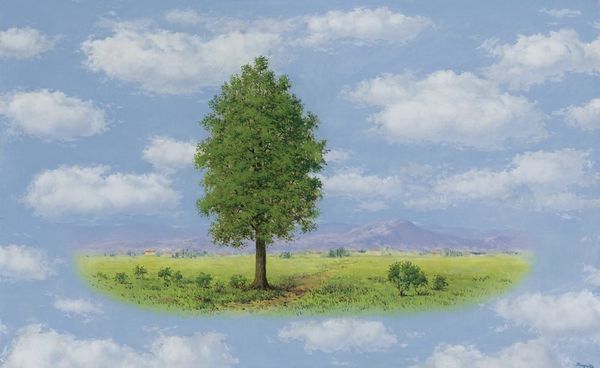
oil-paint
#
oil-paint
#
landscape
#
figuration
#
surrealism
#
pattern in nature
#
realism
Copyright: Modern Artists: Artvee
Curator: René Magritte created "L’Arc de Triomphe" in 1962 using oil paint. It is such an evocative piece. What strikes you initially about it? Editor: It’s profoundly unsettling. That wall of foliage—almost aggressively uniform—closing in around the solitary tree is incredibly oppressive. It feels like the tree is being consumed, both visually and conceptually. Curator: Exactly! The foliage reads as an impenetrable backdrop, almost a theatrical flat. Considering the political climate of the 60s—think of the Cold War and rising social anxieties—one could interpret that green mass as representative of the pressures of conformity and social expectations that suppress individual identity. Editor: That’s a potent reading. I also can't help but think about how the museum as an institution shapes how we receive art like this. It makes me ask, why are some forms of surrealism celebrated within museum walls, when they're, at their heart, critical of institutional thinking? Curator: Right! Magritte certainly invites us to examine these paradoxes. His choice of the title, “L'Arc de Triomphe,” traditionally a symbol of victory and national pride, adds another layer of irony. Is he suggesting triumph within a system that smothers individuality, or is it a triumph of nature persisting against such odds? Editor: Or perhaps, the triumph *is* the conformity, the subjugation of the self. The unsettling precision with which he's rendered the pattern is part of it—that repetition acts like a visual hammer, enforcing the idea of something overwhelming. Curator: And even the choice of a solitary tree adds to that discourse. We are facing a tension between nature, culture, and identity, the three intersecting at this strange surreal landscape. Editor: Indeed. Viewing "L’Arc de Triomphe” leaves you contemplating your role, perhaps *everyone's* role, within structures far larger than oneself. It's not merely a pleasing landscape but an indictment. Curator: Absolutely, and for me, it demonstrates art's power to be both beautiful and deeply critical, reflecting on our shared anxieties and aspirations.
Comments
No comments
Be the first to comment and join the conversation on the ultimate creative platform.
